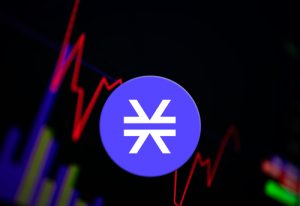DeFi Lending and The Rise of Flash Loans

Decentralized Finance (DeFi) aims to provide all the same services as traditional finance, but on the blockchain to make them available to everyone, everywhere. DeFi protocols offer lending, borrowing, trading, and other products that TradFi offers at a higher cost and slower pace.
In TradFi, intermediaries such as banks bring trust into a transaction and take a huge fee for their role. Smart contracts eliminate the need for middlemen in DeFi, which results in faster transaction processing and lower fees.
Let’s dive into DeFi lending, how it works, and of course, the rise of the collateral-free flash loans.
Understanding DeFi lending
DeFi is a broad term that covers financial products and services offered on the blockchain.
More than $53 billion worth of crypto assets are locked in the DeFi ecosystem, according to DeFi Pulse. That’s up from just $1.8 billion in June 2020, reflecting the enormous growth over the last year.
There is no central authority in DeFi to control or monitor the entire system. Lenders can enroll their crypto assets on a platform to lend and earn interest. DeFi lending offers much better interest rates than the traditional saving vehicles.
When you invest in a crypto asset, you are hoping to sell it to someone at a higher price someday. Until that day arrives, it will be sitting idle in your crypto wallet. Earning no interest. The price may go up or down over time, but you are earning nothing for holding it.
DeFi applications enable you to lend your crypto to someone else and earn interest on the loan. Since there are no barriers, anyone can become a lender on DeFi.
Borrowers who own crypto assets they believe in (hence don’t want to sell) but see an opportunity in another asset can use their crypto holdings as collateral to obtain loans and take advantage of the opportunity.
Most DeFi lending protocols require the collateral value to be higher than the amount you are borrowing. It mitigates the risk rising from the volatility in the collateral’s prices.
But lending and borrowing are not the only services facilitated by DeFi protocols. They offer futures, options, and other complex products too.
Thanks to blockchain technology and smart contracts, the fund management and transactions are transparent. Lenders can pool their assets into a lending pool and then distribute loans to borrowers using smart contracts.
Decentralized finance brings a number of benefits to users.
Faster loan processing: DeFi protocols use fraud detection technology and AI to determine the risk factors and loan terms. Every step happens at a blazing fast speed.Permissionless: DeFi gives lenders and borrowers permissionless access to the market. Anyone with a crypto wallet can access DeFi apps on the blockchain, wherever in the world they are.Transparency: The blockchain transactions are in the public domain and can be analyzed by anyone.
The emergence of flash loans
Flash loans have become increasingly popular because they allow users to borrow crypto assets from a smart contract pool without any collateral. As its name suggests, a flash loan involves borrowing assets and repaying within the same transaction on the Ethereum blockchain.
Though the concept of flash loans was first introduced by the Marble Protocol, DyDx and Aave have made it insanely popular. Other DeFi protocols such as Hoard Market have also launched the flash loan functionality.
A transaction on the Ethereum blockchain involves several atomic operations. It means all or nothing. Either all operations in a transaction go through successfully, or the entire transaction is rolled back and none of the steps would occur.
To execute a flash loan, you’ll first need to find a flash loan provider and you’ll have to repay the borrowed amount with a small fee. The fee is split between the lenders and the platform facilitating the flash loan. The fees are ridiculously low. For example, Hoard Market charges just 0.01% for flash loans in HRD tokens and 0.02% in other tokens.
Since the borrowed money must be repaid within the same transaction, there is no risk of the borrowers not repaying the loan.
When are flash loans useful?
Flash loans were invented to take advantage of arbitrage opportunities.
It enables traders to borrow from a flash loan provider to buy a token on one decentralized exchange and immediately sell it on another exchange for a higher price. The trader would then repay the loan with a minuscule fee, and pocket the arbitrage profit.
Here are the main use cases of flash loans:
Arbitrage opportunities: If you see a price difference between two decentralized exchanges, you can take a flash loan to boost your profits by taking advantage of the arbitrage opportunities.Collateral swap: This is another popular use case of flash loans. If you’ve borrowed DAI from the Hoard Market with HRD tokens as a collateral, you can swap your collateral from HRD to another supported token such as USDT.Self-liquidation: Self-liquidation could prove useful when the value of your collateral drops dramatically and you approach the liquidation level.
Conclusion
Decentralized finance has started eating the lunch of traditional finance, thanks to its ease, transparency, low cost, and permissionless nature. Flash loans are just one of the innovative features of Defi. We could see many more in the coming years.














